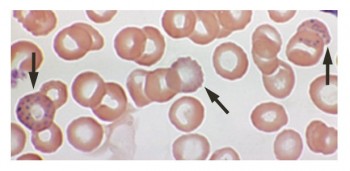A Lead Poisoning Outbreak in Nigeria, Plumbism and Anemia
Over 400 Nigerian children have died from lead poisoning this year, the Times reported yesterday. The outbreak is centered in five villages in the northwestern state of Zamfara.
Small-scale gold mining in the region leads to lead toxicity, as follows: “In an attempt to extract gold from ore rich with lead, miners crush and dry the ore, often inside their own homes. The soil and in some cases the groundwater get contaminated,” according to an Oct 5 field report from Doctors Without Borders/Médecins Sans Frontières (MSF).
I learned long ago that lead poisoning is sometimes called plumbism, stemming from plumbum, the Latin term for lead (Pb, atomic number 82), a metal used by plumbers. A rarer term is Saturnism, based on the metal’s association with the planet and ancient Roman god.
Now, in the U.S., lead poisoning most commonly comes from environmental toxins like lead-based paint. It affects children, who may eat flakes of peeling, lead-based paint or accidentally ingest lead by licking or eating toys or jewelry that contain this toxic metal. The problem occurs in adults, too, typically from unknown sources.
The EPA provides some helpful information on its website. Lead poisoning can be subtle; common symptoms are fatigue and poor concentration. Doctors may detect anemia, and upon inspection of a patient’s red blood cells might find characteristic basophilic stippling. The National Institute of Environmental Health Sciences (NIEHS) reports that lead toxicity declined dramatically from 1980 to 2000 in the U.S.

In northwest Nigeria, MSF workers are treating some of the affected children and nursing mothers with chelating agents; these metal-binding compounds clear lead from the bloodstream and, to some extent, remove it from body organs where it’s already deposited. The World Health Organization (WHO) issued a bulletin on lead poisoning from gold-mining in Nigeria in June, 2010.
——
Leave a Reply